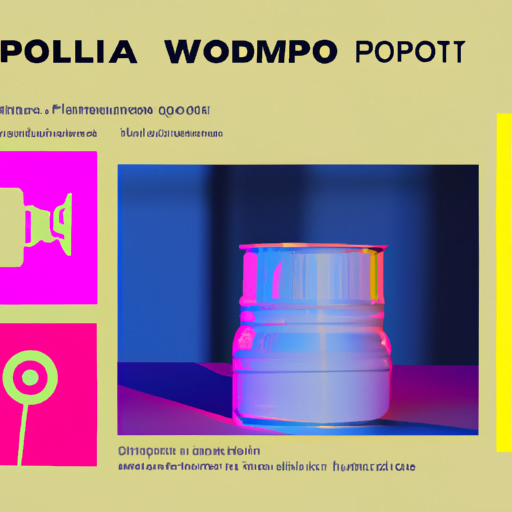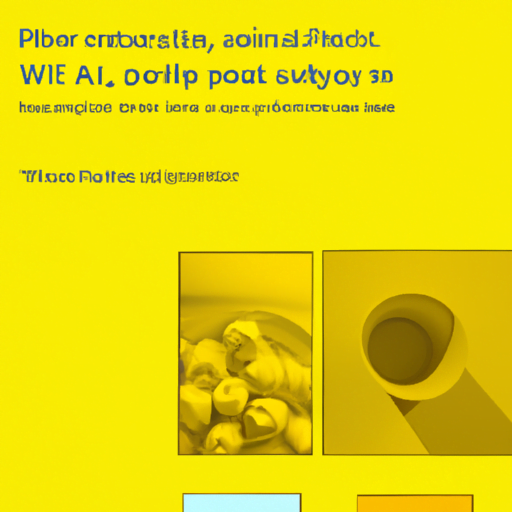
-
Table of Contents
Web Interface Design Trends

Web interface design is constantly evolving, with new trends emerging each year. As technology advances and user expectations change, designers must stay up-to-date with the latest trends to create compelling and user-friendly websites. In this article, we will explore some of the most prominent web interface design trends that are shaping the digital landscape in 2021.
1. Minimalism
Minimalism has been a popular design trend for several years, and it continues to dominate the web interface design landscape. Minimalistic designs focus on simplicity, using clean lines, ample white space, and a limited color palette to create a visually appealing and clutter-free interface.
One of the key benefits of minimalism is improved user experience. By removing unnecessary elements and distractions, users can focus on the core content and navigate the website more easily. Minimalistic designs also tend to load faster, enhancing the overall performance of the website.
For example, Apple’s website is a prime example of minimalistic design. The use of white space, simple typography, and high-quality product images creates a sleek and modern interface that is easy to navigate.
2. Dark Mode
Dark mode has gained significant popularity in recent years, with many websites and applications offering this alternative color scheme. Dark mode replaces the traditional light background with a dark background and light text, reducing eye strain and improving readability, especially in low-light environments.
According to a study conducted by Google, dark mode can significantly reduce power consumption on devices with OLED screens. This is because OLED screens can turn off individual pixels when displaying black, resulting in energy savings.
Many popular websites and applications, such as Twitter and YouTube, now offer a dark mode option. This trend is likely to continue as more users recognize the benefits of dark mode and expect it as a standard feature.
3. Microinteractions
Microinteractions are small, subtle animations or visual cues that provide feedback to users and enhance the overall user experience. These interactions can be as simple as a button changing color when hovered over or more complex, such as a progress bar indicating the completion of a task.
Microinteractions add a layer of interactivity and delight to the user experience, making the website feel more engaging and responsive. They can also provide valuable feedback to users, such as confirming a successful action or alerting them to an error.
For example, Facebook’s “like” button is a microinteraction that provides immediate visual feedback to users when they interact with it. The button changes color and displays a brief animation, reinforcing the action taken by the user.
4. Voice User Interface (VUI)
Voice user interfaces (VUI) have gained significant traction with the rise of virtual assistants like Amazon’s Alexa and Apple’s Siri. VUI allows users to interact with websites and applications using voice commands, eliminating the need for traditional input methods like typing or clicking.
As voice recognition technology improves, more websites are incorporating VUI to provide a hands-free and convenient user experience. This trend is particularly relevant for mobile devices, where typing can be cumbersome.
For example, Google’s voice search feature allows users to search the web by simply speaking their query. This eliminates the need to type on a small mobile screen and provides a faster and more natural way to interact with the search engine.
5. Responsive Design
Responsive design is not a new trend, but it remains a crucial aspect of web interface design. With the increasing use of mobile devices, websites must adapt to different screen sizes and resolutions to provide a seamless user experience across all devices.
Responsive design ensures that websites automatically adjust their layout, font sizes, and images to fit the screen they are being viewed on. This eliminates the need for users to zoom in or scroll horizontally, improving usability and accessibility.
According to Statista, mobile devices accounted for over 50% of global website traffic in 2020. This statistic highlights the importance of responsive design in catering to the growing number of mobile users.
6. Neumorphism
Neumorphism is a design trend that combines elements of skeuomorphism and flat design. It involves creating user interfaces that mimic real-world objects, using subtle shadows and highlights to create a three-dimensional appearance.
This trend adds depth and realism to the interface, making it visually appealing and engaging. Neumorphic designs often feature soft edges and pastel colors, creating a modern and elegant aesthetic.
However, it is important to use neumorphism sparingly and with caution. Excessive use of shadows and highlights can make the interface appear cluttered and difficult to navigate.
7. Asymmetry
Asymmetrical layouts have gained popularity in recent years, deviating from the traditional grid-based designs. Asymmetry adds visual interest and uniqueness to the interface, making it stand out from the crowd.
By breaking away from rigid grids, designers can create more dynamic and creative layouts. Asymmetrical designs often feature overlapping elements, varying sizes, and unconventional placements, resulting in a visually striking and memorable interface.
However, it is important to maintain balance and harmony in asymmetrical designs to ensure that the interface remains visually appealing and easy to navigate.
Summary
Web interface design trends are constantly evolving, driven by technological advancements and changing user expectations. In 2021, minimalism, dark mode, microinteractions, voice user interfaces, responsive design, neumorphism, and asymmetry are some of the prominent trends shaping the digital landscape.
Designers must stay up-to-date with these trends to create compelling and user-friendly websites. By incorporating these trends into their designs, designers can enhance the user experience, improve usability, and create visually appealing interfaces that captivate and engage users.
As technology continues to advance, it is essential for designers to adapt and embrace new trends to stay ahead of the competition and deliver exceptional web experiences. By understanding and implementing these trends, designers can create interfaces that are not only visually stunning but also intuitive and user-centric.
